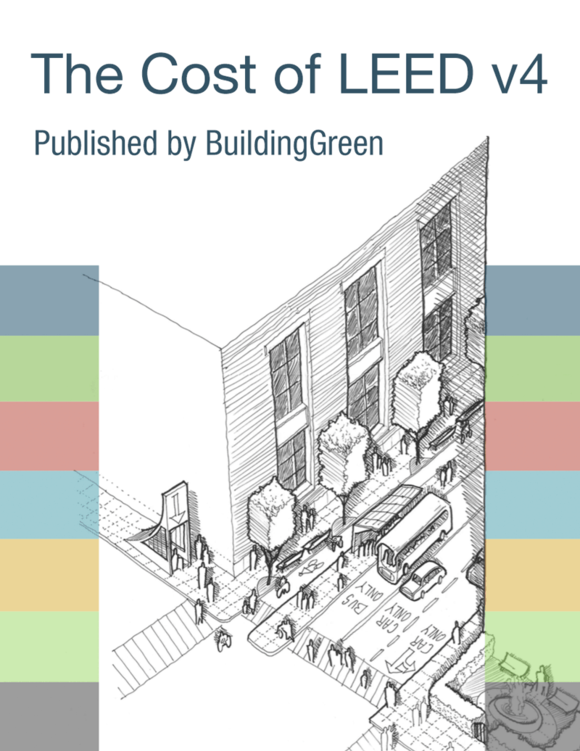replace "There are no substantive changes to the credit requirements; refer to the LEED v4 reference guide, with the following addition:" with "Behind the Intent
Beta Update
The interior lighting credit has been overhauled to prioritize strategies identified by industry lighting experts as most critical and impactful for new construction LEED projects.
Lighting quality strategies for
lamp life, direct overhead lighting, surface
illuminance ratio have been removed.
The threshold for light fixture luminance has been decreased from 2,500 candela per square meter (cd/m2) to 7,000 cd/m2. An alternative metric Unified Glare Rating has been added as a new option.
The threshold for Color rendering index has been increased from
CRI of 80 to
CRI of 90. An alternative metric Color Fidelity Index has been added as a new option.
The previous option for lighting control has been simplified to a single requirement for dimmable or multilevel lighting in occupied spaces.
The surface reflectance requirements have been combined, requirements for floors are removed and the thresholds have been decreased from 85% for ceilings and 60% for walls to 80% for ceilings and 55% for walls.
Step-by-Step Guidance
Step 1. Establish Lighting Needs
Work with the owner to understand occupant’s lighting needs and desires.
• Document the types of tasks that will occur in each space and the tools or equipment that occupants use regularly, and determine appropriate light levels for tasks.
• Identify the level of control that occupants should have and the characteristics of the occupant population.
• Select measures that are appropriate for the project. Some options require attention during early design phases because achievement depends on luminare selection and configuration and architectural surface specifications.
Step 2. For Projects Pursuing Glare Control
For the light fixtures, review luminaire cutsheets, Illuminating Engineering Society photometric files, or other documentation to identify luminance between 45 degrees and 90 degrees from nadir and select products that meet the credit requirements.
Alternatively, select fixtures so that the spaces meet the UGR rating requirements.
Exceptions include wallwash fixtures properly aimed at walls, as specified by manufacturer’s data, indirect uplighting fixtures, provided there is no view down into these uplights from a regularly occupied space above, and any other specific applications (i.e. adjustable fixtures).
Exclude shipping and receiving, warehouse, and distribution centers where projects need to meet IES recommended foot-candles while maintaining clearance for forklifts and other tall equipment.
Step 3. For Projects Pursuing Color Rendering
Specify all light sources to meet the credit requirements for
color rendering index or color fidelity index.
Exceptions include lamps or fixtures specifically designed to provide colored lighting for effect, site lighting, and lamps or fixtures designed for some other special use.
For the light sources, determine the
CRI, not to be confused with correlated color temperature (CCT) which refers to the spectrum of warm to cool. A light source can have a high or low
CRI regardless of CCT.
Step 4. For Projects Pursuing Lighting Control
Specify all light sources to meet the credit requirements for
color rendering index or color fidelity index.
Identify all occupant spaces in the project.
Design lighting controls for each of these spaces to meet the credit requirements.
Step 5. For Projects Pursuing Surface Reflectivity
Select or specify high-reflective finish materials. Before construction begins, review manufacturer’s cutsheets to identify reflectance typically expressed as a fraction or percentage LR (light reflectance) or LRV (light reflectance value). If manufacturers’ data do not include reflectance, measure the reflectance of product samples (before construction) or the installed product (post-construction) using the methodology described in IES Lighting Handbook, or use reflectance charts such as Lighting Guide 11, Surface Reflectance and Color.
For work surfaces and movable partitions compliance is limited to the opaque surfaces of the partition; transparent or partially transparent surfaces are excluded.
If each surface is unable to comply with the reflectance requirement a weighted average surface reflectance calculation can be performed.
Step 6. Confirm Compliance
Compile documentation that confirms compliance with the selected strategies.
Under Further Explanation, add:
"Required Documentation
Table of occupied spaces and associated lighting details
Lighting details, including manufacturer and model, results of estimations, or in situ or laboratory photometric tests
Surface Reflectivity:
o List of ceiling and wall surfaces, work surfaces (if in project scopes), movable partitions (if in project scope), and their associated surface reflectance values
Average surface reflectance calculations (if needed)
"


